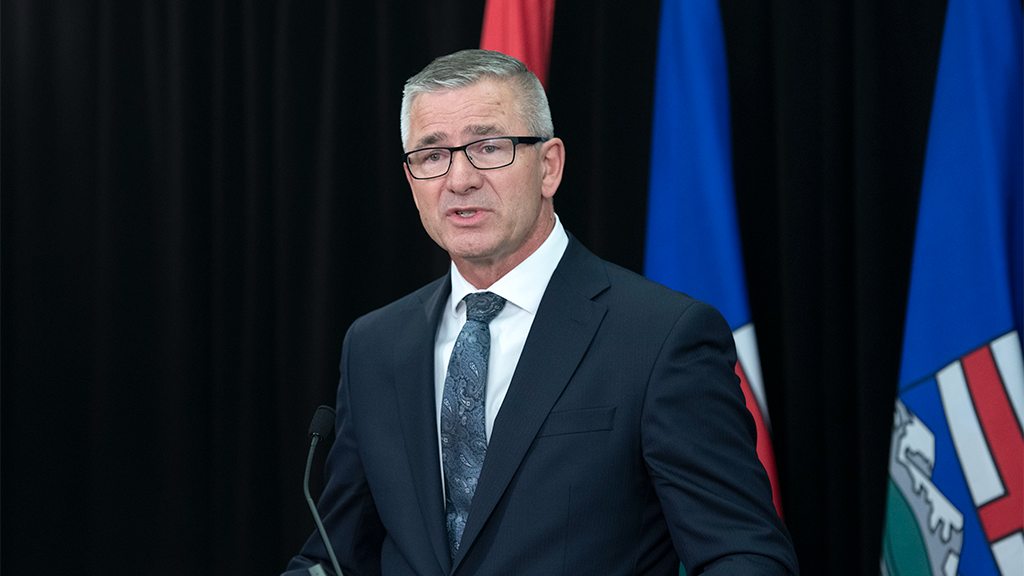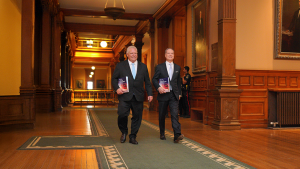With a forecasted surplus of $2.4 billion and more than $20 billion in capital spending, Alberta builders say they are pleased with the recently released 2023 budget.
“We applaud the government for the budget they put out. I think it was a fair budget,” said Trevor Doucette, chair of the Alberta Construction Association.
He emphasized the fact capital spending was spread across numerous sectors of the construction industry.
“I think there’s a good spread between municipal infrastructure, health facilities, highways and roads, bridges and schools of course. It’s a really good first step for this government.”
Doucette said a wide berth of infrastructure investment will make the construction industry and the province as a whole economically stronger.
“It’s key that we have a diversified construction industry and that there’s diversified spending,” he said.
“It’s really important to keep the economic engine turning by spreading funding out. We’re happy with that.”
The capital budget includes $6.5 billion for municipal support, $3.5 billion for maintenance and renewal of public infrastructure, $2.3 billion for roads and bridges and $1.6 billion for kindergarten to Grade 12 school projects, among other items.
But Doucette expressed some concern for the province’s approach to building up the workforce amid a skilled labour shortage.
The 2023 budget includes a $156 million investment for Alberta at Work in 2025-2026. While welcome, Doucette said throwing money at training isn’t necessarily the solution.
“I’m not so sure if a dollar amount is what’s going to fix it,” he said. “We need more people in general.”
Doucette said attracting more people into the industry through education outreach is possibly the sector’s best hope, emphasizing the need to expose youth to the industry earlier than at a post-secondary level.
“We need to convince the education system and we need to convince the parents that there are viable careers in construction.”
He said the view of construction needs to change so it is seen as a primary instead of secondary career.
Much of this work needs to be done at an early stage, he explained, and education systems could be reworked to have younger students engaging with the trades and the industry.
Beyond youth outreach, Doucette said immigration is also critical.
“I think that’s going to have to come through increased federal immigration programs with the support of the provincial government, of course.”
Regardless, “we were satisfied with this budget as a first step towards reinvigorating and keeping the construction industry economy flowing,” he said.
The budget also received praise from the Progressive Contractors Association of Canada (PCA).
“This is a budget that puts good, well-paying Alberta jobs front and centre. We fully support efforts aimed at improving the province’s business climate and getting important infrastructure projects built,” said president Paul de Jong.
PCA was supportive of the government’s investment in the labour shortage, singling out the extension of Alberta at Work and a $111 million investment over three years to support post-secondary enrolment in high demand sectors.
The Calgary Construction Association (CCA) highlighted investments in transportation infrastructure as essential as the city grows.
The CCA “is pleased to see significant infrastructure spending in the Calgary region that will promote jobs and economic activity in the construction industry,” the association wrote in a news release.
The budget includes $541 million over three years for Calgary LRT projects and $429.7 million over three years for the Deerfoot Trail.
CCA president Bill Black noted a lack of investment in the city’s downtown strategy and that the event centre project and field house were left out of the budget.
“These are important projects for the city because not only do they provide jobs and economic activity for the industry, but they are also strong investments in the cultural vibrancy of Calgary and serve as magnets that attracts people to move here,” Black said.
“We hope that the Government of Alberta considers these projects in the future.”
The CCA noted there are as many as 4,000 vacant construction jobs in the city and was supportive of the investment into Alberta at Work.











Recent Comments
comments for this post are closed